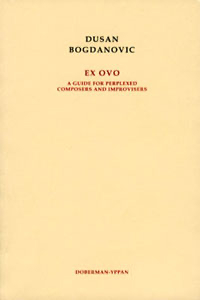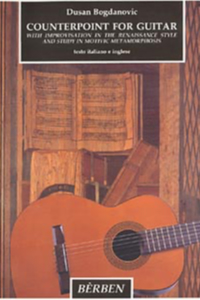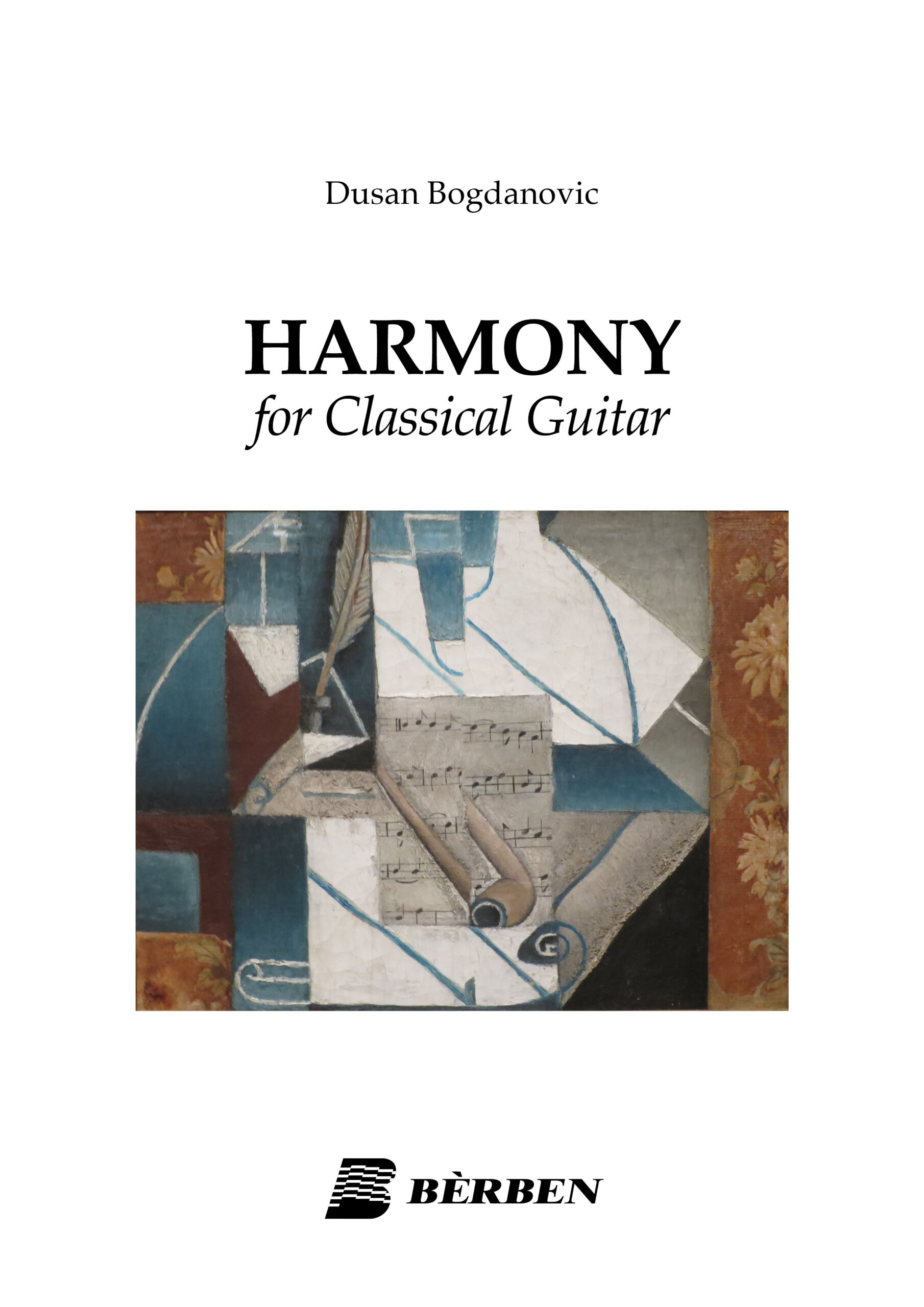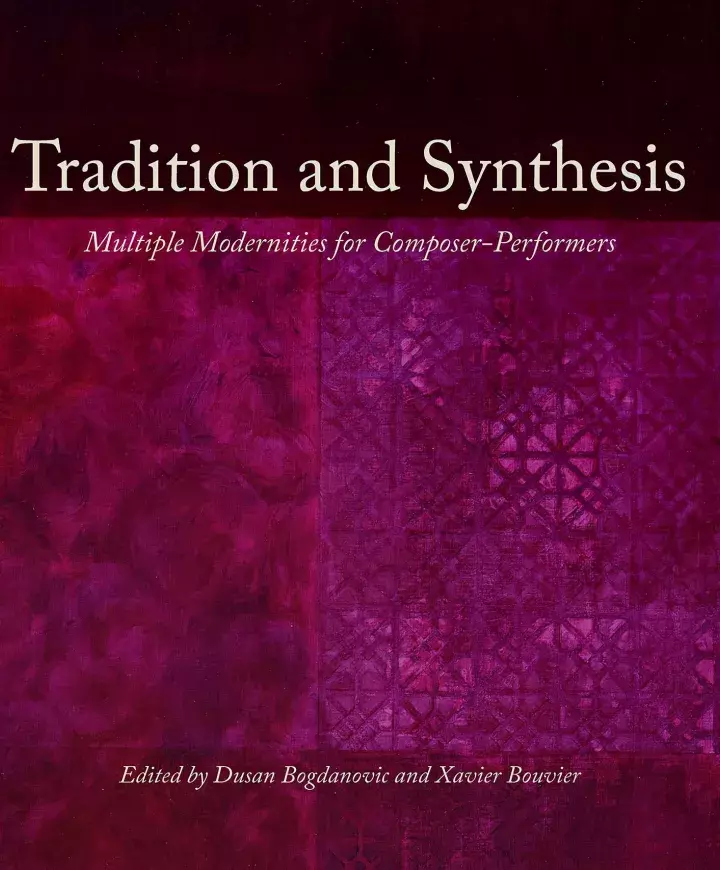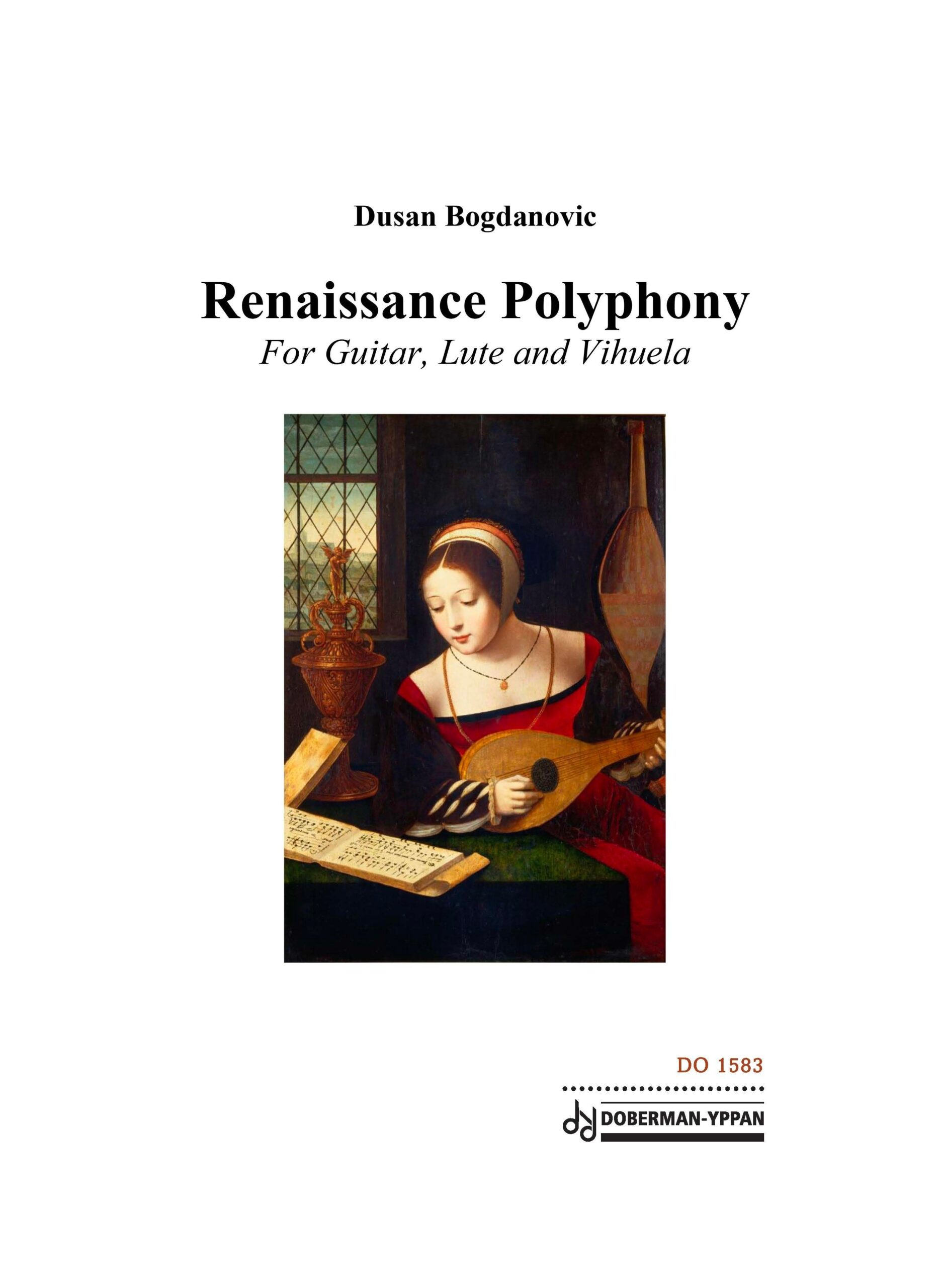Interview with Dusan Bogdanović
GUITART 109, Italy 15/09/2015
Le riflessioni esposte nei precedenti paragrafi si riferiscono ai concetti culturalmente condivisi di improvvisazione e composizione, evidenziandone il carattere poetico e filosofico che in ambito musicale ha sempre suscitato un certo fascino. Si riporta in seguito l’intervista a Dušan Bogdanović, nella quale il compositore esprime in modo dettagliato la propria visione dell’improvvisazione raccontando come, nel corso della sua esperienza di musicista, essa per alcuni anni fosse diventata parte del suo approccio compositivo, influenzando di conseguenza il suo stile musicale.
S.B.) Starting with your reflections concerning the improvisation, I tried to examine in depth the role of improvisation in western art music. A sort of drying up came to light, as P. Boulez explains in his critique. In one of his conversations with Célestine Deliège he affirms that even Jazz music has become progressively more fixed, and he explains that its predictability is due to the fact that human memory is not able to build an elaborate formal architecture in an extemporary way. Consequently, this means that the “pure” improvisation would not include neither the structure nor the formal projection Studies that come from non-European repertoires prepare the way for new perspectives, from the notion of model to that of motorial patterns. The role of memory is always central, since we are talking about repertoires mostly of oral tradition. For example, thanks to Nico Staiti’s Studies we know that the professional musicians from Kossovo have a capability of measurement (and consequently of memory) of metrical and rhythmic cycles that are unimaginable for us. Since you studied deeply both the improvisation on models, typical of African music, and Jazz, what do you think on the matter?
D.B.) It’s a very interesting question, of course, and it’s about a very large subject. I understand, I remember the opinion of Boulez and I read his writings about improvisation, and his reflections about the limitation of human memory and the consequent problem of formal structuring formally… I think it’s true but, in the history of western classical music, there were many different forms that were improvised on, somebody unknown but others well known like, for example, J. S. Bach. He was a famous improviser, I think more famous as an improviser and organ player than a composer. So these kinds of improvisations are very intricate and complex. They include counterpoint rules, forms, as passacaglia form, fugue, or if we think to the Renaissance, F. Canova da Milano or J. Dowland were able to (as far as we know) improvise on forms like Ricercare or Fantasia. So, of course, some kind of completely independent or, like the word is, “Pure improvisation” (whatever “pure” means…), that would be some kind of a major task to accomplish, but we have models. This historical models used very complex types of forms and very complex types of languages, like saying for example “Palestrina’s 16th century renaissance counterpoint” or “Bach’s baroque counterpoint”. Many of these languages are very elaborated stylistically and conceptually… And people were able to improvise on those forms. That’s only from our example of western classical music. Then to take the example of African music where there are very, VERY complex forms as polyrythm or polymeters played by the musicians. When these musicians work together, If one person for example just does one pattern, the other person knows exactly at what point this pattern is, in reference to HIS own pattern. So there are complex polyrhythms and polymeters that are also based on the memory. And these kind of things are often improvised. So the Improvisation is not necessarily entirely done, but usually in some kind of formal contexts. There is a formal reference, a formal context, and I think that the same goes for as, taking another example, in Indian Music. When someone is playing Raga, usually the Alap (the introductory section of Raga) is improvised,and there are many different references and formal models for this kind of music. Now as far as Jazz goes, I’m not sure that this is necessarily true that Jazz became more and more fixed. Actually if you look at the 20th century’s history of Jazz there is actually a lass of fixed forms and, if we examine some Jazz parallels, I think we could find much parallels with classical contemporary music than anything else. I mean, in terms of languages the early Jazz is simple and pretty tonal, then Jazz becomes modal…With further developments it becomes impressionist with influences of Debussy and Ravel and then, further on, there is the influence of musicians like Coltrane and also African music and Indian music. So that generation has changed very much people (like Coleman), to contemporary Jazz, and in the so called “free Jazz” musicians weren’t necessarily so much “fixed” in that sense. Now, for me this is the problem: with all these possibilities of fixing every little detail of a structure (like was the case in serial music), the result of this kind of fixing every detail in many ways actually on a macro structure or a big architectural structure often sounds very much like what improvisation sounds like. So what I think is there’s some kind of a big macrostructural concept that in some ways sounds very similar between free improvised music and completely fixed music. You cannot finally completely compare the one with the other, and I think there are some advantages and some disadvantages as always. I think that the advantage in fixing everything is that you have a great sense of control, which you just don’t have in Jazz. On the other hand in improvised music you have a great sense of freedom, anything it’s never exactly the same and this is an advantage to have despite the music which is always fixed, because you have the freedom to don’t necessarily always change… So my final conclusion is that there are always certain systems and references which can be used in improvisation and also in written music, and there are advantages and disadvantages in each system, in each choice. But, I repeat, it’s a very large argument…
S.B.) I’m going to introduce the considerations about Jazz Sonata with a question on your compositional practice: when you begin to compose, which is the first element do you start from? How a musical idea becomes music?
D.B.) It’s a good question. It depends on what kind of instrumentation is involved. If it’s a solo guitar or some other solo instrument piece, I tend to improvise or “play with the material” until something establishes itself. Then this motif, or gesture, or feeling gives me the clue as to what kind of form and language I need for the piece. I usually start with whatever I find very attractive at some point, it could be in idea or a pattern…I usually improvise a little bit, and actually I use piano more than I use guitar. I improvise just to get a feeling or an atmosphere for what I’m trying to do….But it could be also a strong musical idea…I usually don’t write music theoretically, I have to join music. I can’t write without feeling anything, or I could but it would be very boring! I don’t find it very interesting. So I always start with some kind of mood, an atmosphere, or a particular feeling.
S.B.) The term Sonata had different meanings and faces from the Renaissance to these days, especially in the twentieth century. Which model of Sonata inspired you when you decided to write the Jazz Sonata? The fact that through the years you have written again cadences for the first and fourth movements, besides the presence of improvisations entrusted to the performer, suggests Jazz Sonata as an open work: could you tell us how much the influence of improvisation has modified this composition during the writing?
D.B.) Actually, before this piece I’ve already written Sonata form in my Sonata no.1 and in my Concerto for guitar and Strings, so I was comfortable with the sonata form, which was a pretty standard classical kind. On that time my language was influenced by Bartók’s string quartets, that I used to listen so much. Jazz Sonata isn’t so different from the traditional sonata form. What’s really adventurous about the Jazz Sonata is not so much about its form but instead the idea that you can actually OPEN up the form. So what’s different from traditional classical form is that you actually have some sections fixed and some open sections. So the introduction is open and the codas are pretty much open too. The 3rd movement can be improvised quite a lot, the 4th movement has some rhythmic improvisations and those could be open…But apart from that, I think that Jazz Sonata is fairly traditional, It has the first theme, the second theme, it has a development section (even on the dominant!), the recapitulation the coda etc…It’s actually a Sonata, not some kind of a “Mutant Sonata”. What is was interesting for me it was to have the same kind of form but being able to extemporize and improvise in this context. Writing Jazz Sonata was like “relaxing the classical form”, so it could breathe in a different way. Also in Jazz you don’t have so much development sections fixed, the development is usually free and it happens spontaneously. As a composer I wanted to have some written out development sections, and this was my contribution from the classical background.
S.B.) Through the composition there are some recurring sonorities and thematic elements which draw a sort of continuity, especially in the first three movements: can we hypothesize some affinities with the “cyclic sonata” structure of the nineteenth century (Liszt’s Sonata, for example)?
D.B.) That might well be the case, but I think that the composing of Jazz Sonata was pretty intuitive. I was tired of the level of control that is required in the classical music and my reliance on the intuition and feeling was a part of my moving away from the construction and too much intellect. You know, I think this idea is more on my classical Sonatas than on Jazz Sonata. But on the other hand I ALWAYS use related motifs, most of my music is based on related motifs. It’s like my standard procedure, but I don’t think to have had a cyclic formal project in Jazz Sonata…not consciously.
S.B.) During the analysis it emerged that the improvisation assume a fundamental role in the creation of the piece. Does the improvisation have a role also in your pre-compositional approach? Do you usually record your improvisations in order to draw the most successful material during the composition of a piece? It would be interesting to understand the relationship that links improvisation and writing: between the so called “a priori” creation and, instead, the fixation of motivic ideas already played, which one does it occur more frequently?
D.B.) Well, I should do that, I should record my improvisations! I think that Improvisation always stays open, but sooner or later you come up with models or patterns…Somewhat that stays with you. So I think composition is fixed in that way, and even in improvisation there is some fixation, some written out element. If I start with an improvisation, I play and I just wait for something that tell me something , that occurs and it’s interesting enough for me or, even better , that this I MUST do. If I “must do” I think that it’s a good beginning!
S.B.)Another question about the connections between Composition and Improvisation… Jazz Sonata has many idiomatic passages on the guitar, are there any motifs that were born during some improvisations with the instrument or with playing something?
D.B.) Jazz Sonata is a piece I wrote almost thirty years ago, so I can’t really remember the details, but since at that time I did improvise a lot, it occurred to me to combine the classical form with the improvisational process. In Jazz and in folk music usually you don’t write out development: it happens spontaneously, but since I introduced already A and B themes, it was natural to compose the developmental section as well. You know, I left Switzerland in 1980 and I spent almost the five years until 1985 in which I abandoned classical music, that time I spent improvising with other people. So when I was writing Jazz Sonata Improvisation was just part of my general outlook. I didn’t think that I was writing down a complete composition. So most of music of that period is near to the so called “leadsheets”, with melodic lines, chords, because I was playing Jazz with a lot of musicians and that is why the mentality of Jazz Sonata is so open. Your question also implies to some extent that in Improvisation that something happens and you feel that is fixable…Actually, if you’re very much in this world of improvising you don’t have anything so fixable anyway. What I mean is that your approach is more fluid and pretty open, so you might start with something and then it might change… there’s a lot of transformation involved. Of course there are particular pieces, you just go to a concert with two or three pieces and you don’t know with which to start. Then you maybe have chosen you program but finally you don’t do these pieces, because other pieces come up and they’re better for the moment. What I mean is that the psychological make-up for Improvisation is really different and depends also to what kind of improvisation is. I’m talking about a really open concept of improvising…
S.B.) A distinguishing feature of this composition is the use of modal scales. Talking about this particular piece, though in the first two movements we can find a complex use of tonal language, enhanced by modal concatenations, the Andante and the Allegro molto suggest a different approach in the use of vertical concatenation of the sounds, perhaps the result of a predominantly linear conception. Are there stylistic elements or influences of early music within the piece?
D.B.) That’s always my approach, more linear in that sense. Counterpoint is much important for me and I always look at voice’s leading more than anything else, this is my preference. I am not aware of any early music influences in this particular music, though there are many in other pieces where I have done this. As I told you, Counterpoint was always my main modus in composing, but the harmony is also very present precisely because I also think “vertically” as you mention, this composition is modal, but also tonal in some ways.
S.B.) Analyzing the piece I found the relationship between improvisation and composition very interesting, and that is evident from the beginning of the first movement where it is even specified “improvise” (at bars n° 3, 6 and 9..) on modal scales. Does the improvisation acknowledge/influence the writing process in your compositional activity? In what way?
D.B.) Composition and improvisation are like two faces of the same person (like the mythical Janus) and they were very much integrated in instrumental practice all the way until Classicism and Romanticism, and even then composers were still using it; think of Mozart or Liszt. In a way, the improvisational elements give the performer the chance to be a co-author of the music so that there is not such a split between activities. As I said before, when I wrote Jazz Sonata I used to improvise a lot. I was living in Los Angeles and I played with great musicians as Milcho Leviev, a Bulgarian pianist-composer, and also James Newton, a great flutist…That seemed to me like that playing it was all for me, and I was very interested in doing it, much more than in composing. But now I’m not actually improvising so much. Now I consider improvisation more like one of the elements that I can do in composition, but is not necessarily true that I begin with an improvisation, not always.
S.B.) Another surprising element is the use of rich sonorities, especially in the first two movements. How important for you is the sound when you write music? Having also carried a career as a guitarist, is there a particular research of resonances and timbral levels in your compositions?
D.B.) I am not greatly sensitive to color, but in this piece I have used a lot of guitar sonorities, resonances, which is easily seen in campanella effects. In the fourth movement, for example, I use percussive effects and ostinato patterns that are very guitaristic etc.
S.B.) In Jazz Sonata the extension of some motivic ideas often determines the entire structure of the piece, as in the Andante. Can we say that the motivic elaboration has progressively become one of your stylistic elements? Among the most recurrent devices used to confer direction to the form there seems to be the modulation, which conveys to give a narrative sense. Once created an articulated formal drawing, how do you decide to link the single sections?
D.B.) There are composers that make the all plan, I never make this. Of course, I’ve got some kind of a formal blueprint in my mind about sonata form and so on, but I never know what it will happen, I don’t like to know it! It’s also part of my attraction to improvisation. You’ve always this advantage of a sort of staying in an open space, you’re always in a present time and the composition.
S.B.) The fourth movement is a good example to talk about your experimentation with the polymetric cycles: where does your interest in writing polymetric come from? Can we say that it has become a stylistic element that distinguishes your musical production?
D.B.) There is some polymeter in my 4th movement, but overall I was not aware at that time (in the 80s) of polyrhythm or polymeter except marginally. It came a bit later: I published my Polymetric Studies in 1991.
S.B.) The influence of West-African music is underlined in the fourth movement: how have you met the “Pygmy music”? Has it been a meeting due to studies on African polyrhythms?
D.B.) Actually it was the other way around. First I “met” Pygmy music then I got interested in polyrhythms. The fist time I heard Bibayak Pygmies recording was in mid-70s and it completely changed my interest in contemporary styles. It was a revelation: a discovery of a new route!
S.B.) At the beginning I was impressed by your particular engagement with ancient music (particularly in the counterpoint art) that later converged in your method Counterpoint for Guitar. In examining your works for guitar I would have expected a method concerning for example “composition and ethnic music”! Is your interest in improvisation responsible for the study of ancient music?
D.B.) I was interested in renaissance music and also pre-renaissance music, I like very much authors like Dufay, Machaut in this kind of music too. I always thought that it would be a good idea to use these forms like Ricercare, I wrote more than ten ricercars of different kinds, you kn. So …kind of revive in a way these practices of improvising on these forms..such as ricercar actually I have some students that have done made all his study on improvisation on ricercars here in Geneva. So actually is my great interest to study improvisation on ancient music and early music.
S.B.) One just needs a quick look at the titles of your works (New York Afternoon, Castles of the White City, Mysterious Habitats) to understand that often you use non-musical suggestions. The presence of an evocative title suggests an imaginative scenery that precedes the listening, directing it towards one possible key of interpretation. Is there a link between this stylistic element and your passion for painting? How much the opening inspiration can influence the artistic result?
D.B.) I’ve always been very much interested in painting. I used to paint when I was 21-22…I liked a lot of abstract things; I was influenced by Kandinskij and other artists, also I wrote poetries and I was inspired by literature and poetry… I don’t see separation between these things. So for me these all kinds of creativity were very important to get inspiration as a composer. I think that an open inspiration is the key to making an interesting work. In my opinion different levels of experience open up when one has access to simultaneous integration of diverse media-music and painting, for example. I actually thought I would become a painter or graphic artist, but…
S.B.) In Towards a new synthesis you highlighted some of the problems about the reality of music today: one of these is the loss of “classical listeners”, the decrease (if not disappearance) of the public and a consequent fading of classical concerts. Is it an irreversible process? Do you see a solution to re-establish the relationship between composers, performers and listeners? Probably classical music might have a new value if the proposal was not only destined to an aesthetic enjoyment in “concert halls”, and on the contrary if it had a role in social activities, only to make an example.
D.B.) This is a theme that has a very complicated answer. Most music has been removed from its natural “habitat”, and not only folk or tribal music but classical as well. A combination of economic, technological, psychosocial and other reasons have created a big split between music and listener. Yes, it would be nice to transform the direction and I can see that happening in some foreseeable future, but I don’t see many signs of this at this point.
S.B.) I’d like to ask you two questions about the use of polyrhythm and polymeter:
1) By reading your publications emerges that the discovery of the writings by Simha Arom, related to African music, was a crucial contribution to your work. Since your experimentation seems to have started in the ’80s, taking shape later in the collection “Polyrhythmic and Polymetric Studies for Guitar” (1991), has the publication of “Polyrhythmic Studies” (1985) by G. Ligeti had some influence on your experience as a composer?
D.B.) Interestingly enough, I never heard Ligeti’s studies until much later and Arom’s work also came to my awareness after my studies. My interest in polyrhythm came from a combination of Bibayak Pigmy music recording (Radio France), my background in asymmetric Balcan meter and my own interest in classifying polymeter/polyrhythm. My studies were written for clarification of my own thinking.
2) In his Studies for Player Piano[1] Conlon Nancarrow achieved a remarkable rhythmic complexity, and he explained that he used to start with the selection of a coordinated system of relationships that constitute the framework of the song:
“When I devote myself to these forms based on polyrhythmic patterns, I take a virgin roller and, since I know in advance how long the piece would be and it would be proportioned, I insert these proportions along the all roll, with the smallest value (that is the unit or the shortest note) that I think I need for the song. So I take the length of the paper sheet, from here to here, and I make that length run on the roller, then I take a sheet of paper and I transcribe all these things on it, and only after I write the piece. Until that moment the piece doesn’t exist, only the relations between the times. ”
On the contrary, which is your compositional approach to the writing of polymetric and polyrhythmic cycles?
D.B.) I find this Nancarrow’s explanation fascinating, but my own approach is not so conceptual. I never know anything in advance and I don’t deal with such long cycles (as Nancarrow) in my music except perhaps in my piece for 12 gongs “To Where Does the One Return”? which involves process of deconstruction and so it had to be preplanned. For me, the polyrhythmic/ polymetric cycles are rather an integral part of various types of formal or emotional contents. I do not just think my music; it bores me to know everything in advance.
S.B.) Finally a little difficult questions: reading your biography I was fascinated by the so called “sabbatical period”, during which you said that you broke up for a while the guitar competitions, using a different approach to Music as an amateur, discovering lots of new genres and deepening also your experience as a jazz musician. Could you kindly tell us something about this revolutionary period? And, in your opinion, what is the sense of making music? What is (and what has been in the past?) music for you?
D.B.) My ”sabbatical period” was a pretty clean break with classical music and for quite some time I did not think that I would come back to it (about three years). This is a long story, but to make it short, I discovered that music for me had a role of “replacement of actual life” and I concluded that art in general was an alienation from the life itself. I still think that this role of art is possible (perhaps for many people), but I don’t think that is necessary. Music at this point represents my primary creative outlet, but it does not have the same all-consuming power that it had when I was younger. So, my “sabbatical period” was crucial for finding balance as a musician and as human being.
S.B.) Recently it has been published your fourth Sonata: which are the elements that inspired you this new adventure? Is there some kind of continuity project that connects and unifies the Sonatas you wrote? Can you speak briefly about the stylistic elements that characterize it?
D.B.) My Sonata n°3 (my fourth Sonata) came as a surprise. I didn’t really think that I had anything more to say in that form, but perhaps you are right: maybe there is a “continuity project” that unifies my sonatas. My sonatas have become less predictable to me ever since I wrote the first one. My Jazz Sonata was certainly a big break with the traditional form and improvisation became a defining tool for this and many other pieces in this period of my life.
My compositions in general have very much reflected transformations and movements in my life, so perhaps some future sonata will have something to say about this?



